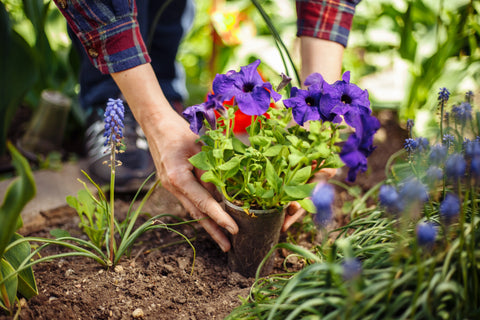Trinette Plants Care Instructions
Read our ultimate guide in taking proper care of Trinette plants as stunning small trees indoors and outdoors. Learn how to maintain one of the easiest houseplants and decorate your space.
Trinette’s Overview |
Trinette plants are widely popular as the Trinette houseplants. The most widespread variety is the umbrella shape, which is extremely easy to maintain. Still, a living being needs a minimum of effort in two significant parts: adequate sunlight and a proper watering routine. Trinette plants are toxic to humans and pets, so do not cross in mind that you can eat them. |
Light |
Trinette plants need bright, indirect sunlight. Although they are well known as medium light plants, a lack of sun rays would lead to a leggy Trinette plant in your house. On the other hand, a Trinette houseplant would burn in direct sunlight. |
Water |
A regular watering schedule will boost your Trinette's growth. The right approach is soaking its soil entirely as soon as you notice that the ground in the pot is waterless. Still, be aware of not overwatering your Trinette cause it will cause yellow leaves till ultimately a quiet end of the houseplant. |
Pruning
|
Another issue originating from a lack of light is the necessity to prune its damaged foliage, which is pretty easy as a process. Just cut off the overgrown o leggy part to the wanted size and shape. Trinette houseplants recuperate fast from the pruning process and look even denser. |
Water
|
Another advantage of upkeeping Dracaena indoors is its demand for less water than most other houseplants. It's fundamental to maintain their leaves dampened to hydrate the Dracaena and often check that you're providing light misted mud with adequate drainage. Always enable the top surface of the ground to dry out before watering. Do not overwater, as it may generate root rot. |
Fertilizer |
This is another distinctive quality in Trinette plants. They don't need to get fed with fertilizer. If you have other plants and are entirely sure you must fertilize your Trinette plant, then do so once a year with a balanced, soft fertilizer. |
Common Problems |
Another perk comes from our Trinette plants. They never get affected by bugs, infections, or diseases. Still, in case of ever ensuing, the most characteristic pests get easily eliminated by washing the plant with water and soap or with an insecticide liquid. Be aware that pests attack a Trinette plant that is not healthy, the same as happens with a stressed, weak human body. Too little light or too much water might cause the most common diseases. |
Trinette’s Care Outdoors |
Whether you want to keep it indoors or outdoors, it's still an effortless plant to maintain. Over time, the Trinette will have fallen foliage and reproduced new one as a vicious cycle. It's essential to clean the fallen leaves in the garden and prune the harmful parts of the foliage, so pests can't have a place to hide and get multiplied. It would help to guarantee humid conditions to your Trinette and continually scan for common concerns outdoors. Pay attention to cleaning the leaves by rinsing them with fresh water and establishing it in a broad zone of your garden. This is important since Trinette's roots are vicious, consistent and can sabotage the bases of other flowers systems. Some gardeners suggest topping the plant for nicely outdoor maintenance when it advances in its height. If your Trinette reaches to blossom its flowers, you may need to extract them in regions such as Florida, where the plant efficiently naturalizes itself. |


